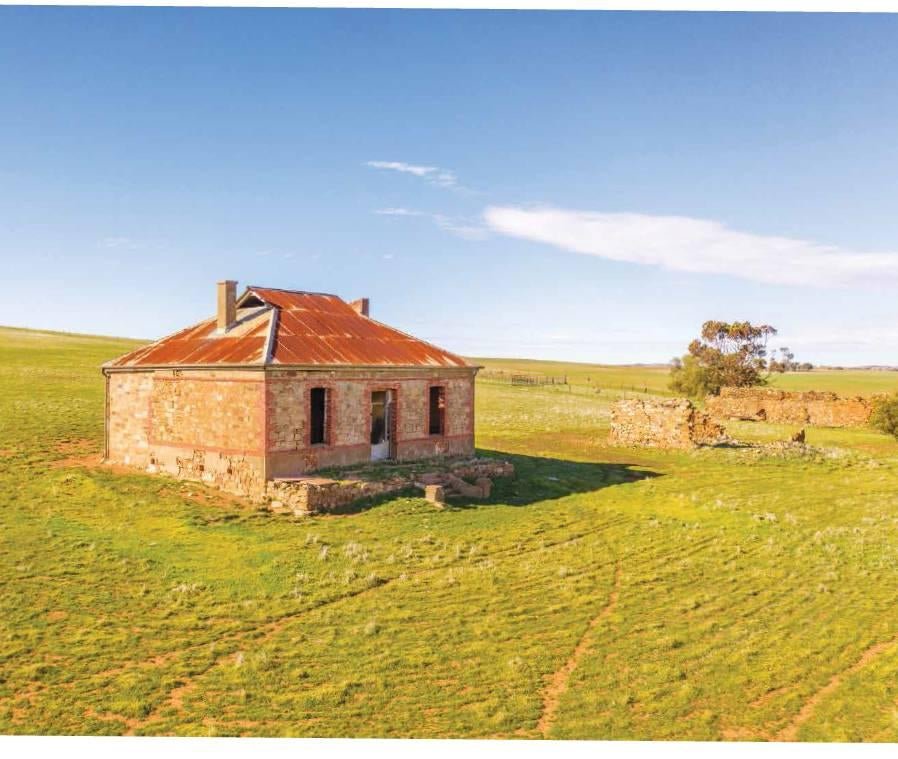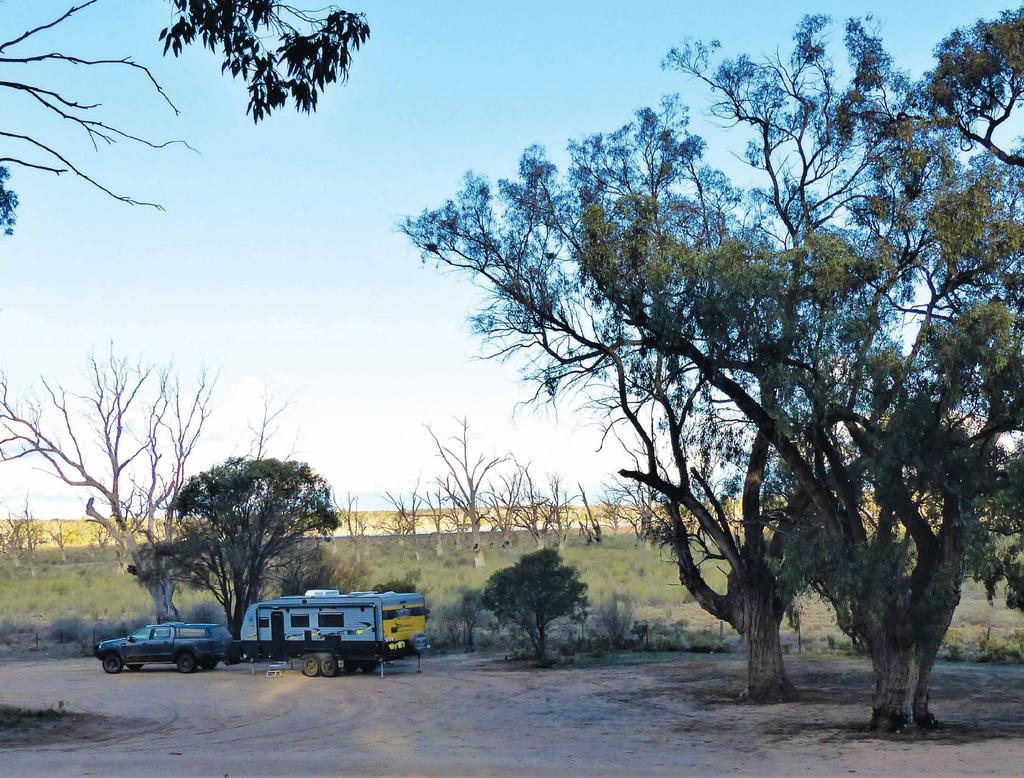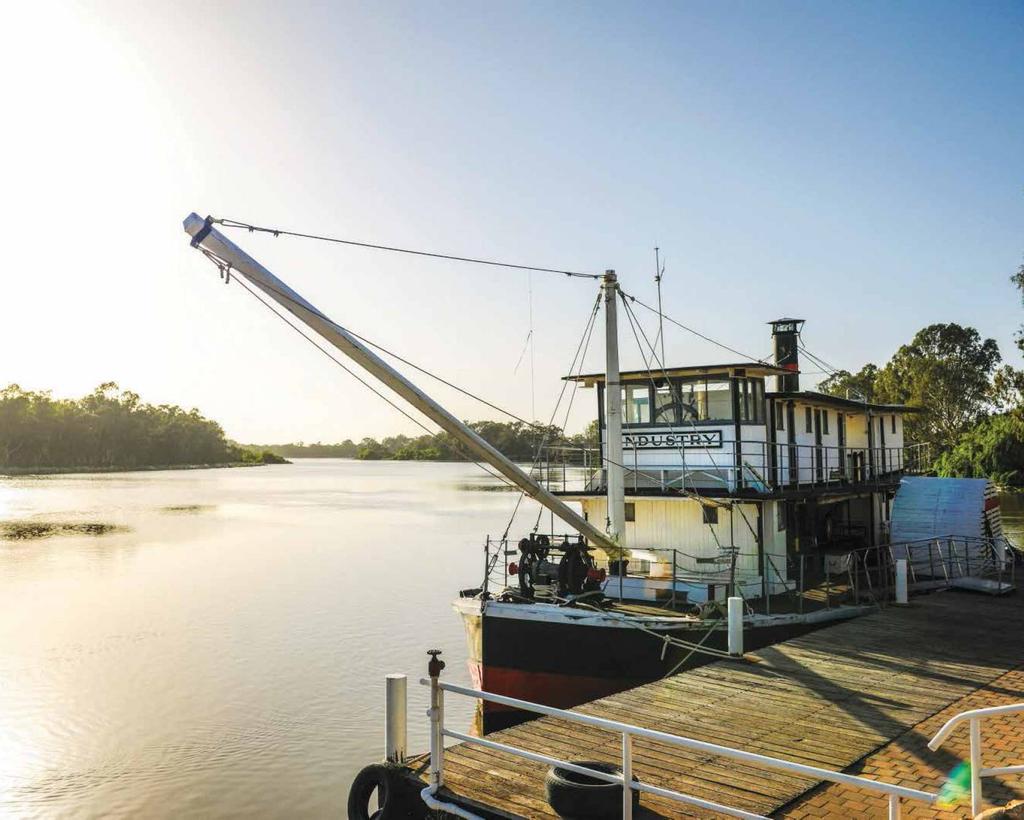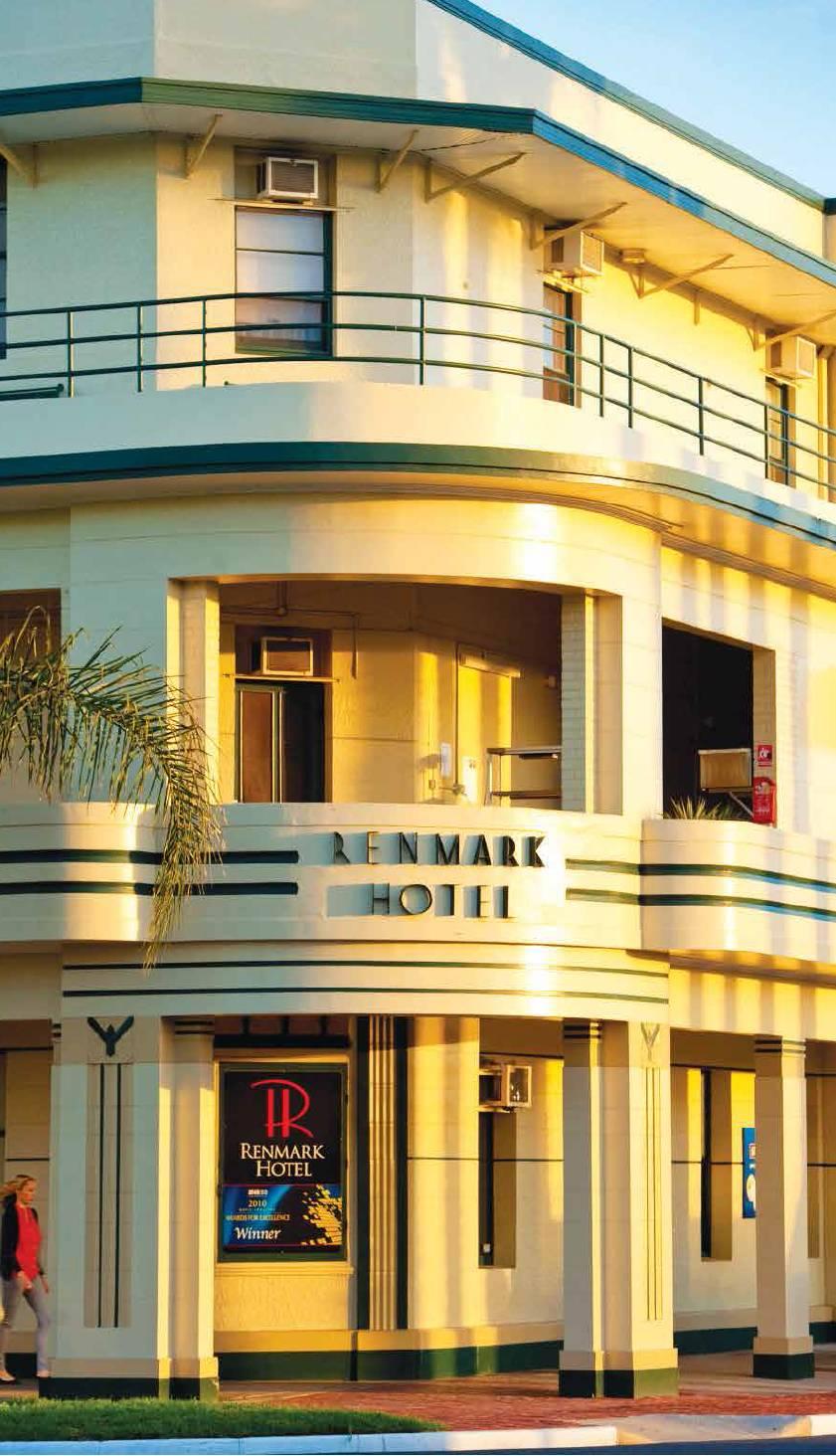Paddle Along the Murray's Past

The once-thriving port town of Morgan is 112km west of Renmark via the Sturt and Goyder Highways. Along the way is Overland Corner, 47km west of Renmark, once one of many outposts where paddle-steamers paused as they plied the Murray.
The Overland Corner Hotel, built from fossilised limestone in 1859, has plenty of yarns of its own — it’s said that in 1879 bushranger Captain Moonlight (aka Andrew George Scott) and his gang, on the run from police, locked the local constable in a cell, took off on horseback, and retired to the hotel for a beer, still astride their horses.
At the cosy bar where Moonlight purportedly downed a beer, the hotel’s owner Brad Flowers tells me of his family’s journey from inner-city living to Overland Corner, population 32.
In December 2020 Brad, his wife Nicole and their two young children set off from Sydney on what was to be a two-year caravanning odyssey around Australia. Five weeks after their departure, COVID-19 hit, so they bought a pub instead.
Today, bands often play in the hotel’s shady beer garden, and patrons dine on the likes of Wa›yu beef schnitzel, Teriyaki salmon, and burgers that bring locals from far and wide.
From Overland Corner, it’s 67km to Morgan, a gem of a riverside town that was once Australia’s busiest inland port.
From the 1880s until around 1910, Morgan’s 168m-long redgum wharf bustled with paddleboat activity, as did the nearby Morgan Railway Station, with six trains a day hissing to a stop at the platform.

Free camping site near the Murray River on Overland Corner
This small town is an ideal place to pause, stroll along the river, see the remains of the wharf, visit the Morgan Railway Museum at the old railway buildings, and Morgan Living History Museum at the nearby Landseer Building.
Once a shipping agents warehouse, the imposing Landseer Building offers a glimpse of the romance of paddle-steamer days, as well as an interesting collection of horse-drawn wagons, an old farmhouse kitchen, and telephone exchange.
Morgan has two hotels, situated opposite each other in prime positions overlooking the river. We learn that The Terminus, established in 1879, was originally popular with paddleboat captains and local landowners, while the similarly-aged Commercial was a favourite with workers.
“Apparently the two groups drank only at one of the two pubs, situated just metres apart, so there would be no fights when they all went to church on Sunday,” said Bill Weaver, a volunteer at the Morgan Living History Museum.
At Morgan we leave the mighty Murray, which from here turns south for its final 315km journey to the sea, while we head north-west towards the Southern Flinders Ranges.
MORGAN TO EUDUNDA
Passing vast red plains and saltbush, we pull into Mount Mary, a hamlet set amid flat, wide open spaces 23km south-west of Morgan.
Originally called Krichauff after a German settler, the railway arrived here in 1878. The town’s name was changed to Beatty post-WWI, when most German names were wiped off the map, then to Mount Mary in 1940.
There’s not much left of the settlement, which once sat on the trainline between Riverland and Adelaide and was a hub for sending wool and charcoal to service Murray River paddle steamers, bar the stone-built Mount Mary Hotel, established in 1894, a scattering of houses and a few old shops.
Mount Mary lies beyond what’s known as ‘Goyder’s Line of Rainfall’, a delineation between arable and arid lands. Goyder’s Line, which runs roughly east-west across central South Australia, is named for Surveyor-General George Goyder who, after inspecting northern pastoral lands devastated by drought in 1864-65, advised the colonial government to discourage farmers from planting crops to the north of the line, where annual rainfall is usually too low to support cropping.
Droves of land-hungry settlers simply ignored his findings. Consequently, wheat harvests were often poor in the Mount Mary region and many early settlers simply couldn’t make a go of it.
These days, inside the bar of the rustic Mount Mary Hotel, owners Donna and Shane Craig serve spectacular seafood platters piled with fresh lobster, scallops, prawns, fish and squid, along with other pub favourites such as lamb shanks and mash.
“Mount Mary might be remote, but the stars are incredible out here,” said Donna as she cuddles an orphaned joey she cares for called Jack. “And so is the history of pioneers settling in a very tough environment.”
Other Mount Mary attractions include the Mount Mary Lawnmower Races, held in June, which attracts more than one-thousand people to town.
Following the Thiele Highway and the old train line through Bower — another town that time forgot — it’s 27km south-west to Eudunda, known by locals as the ‘Valley of the Hidden Treasurers.’

Renmark and its paddle steamer Industry, Image: SA Tourism
Just west of town are freshwater springs called Eudundacowi by the Ngadjuri people, where stock being overlanded from Adelaide to Queensland during the late 1800s were watered. The town, dating from 1870, was named for this site.
Featuring a parade of historic buildings, Eudunda is delightfully un-touristy and full of charm. Around town are a few classic garages dating from the early days of motoring, the long-closed Laucke flour mill, shops with wide verandas, and two hotels — the Eudunda Hotel and the Light Hotel.
Brochures, available from the Eudunda Family Heritage Gallery list 47 places of interest around town to explore, including the Colin Thiele Drive. Author of more than 100 books including Storm Boy, Thiele was born in Eudunda in 1920. A bronze statue of the author takes pride of place at the town’s lovely Centenary Gardens.
EUDUNDA TO BURRA
From Eudunda, we turn on to the Worlds End Highway and the 67km drive to the old copper-mining town of Burra. Along the way, driving across flat plains are some interesting sights, including the stone Lutheran church with a gilded golden tower, and hotel fondly referred to as the ‘Pointy Pub,’ at the tiny town of Point Pass.
Further north is Robertstown, population 151, which was bustling agricultural hub in the 1950s, with a railway, saddlery, two garages and a blacksmith — all now long gone.
Still in town though is Lehmann’s General Store, where Merv Lehmann has been serving customers since he started working for the store’s previous owner Reg Roberts — for whom the town was named — 72 years ago, when he was barely 16 years old.
Now 88, Merv, also a farmer — his great-grandfather purchased farmland in Robertstown in 1881 — bought the iconic store with its original timber shelving and counters in 1976, which he runs today with his daughter, Cheryl.
Originally called Emuville when it was first settled by Europeans in the 1860s, Robertstown is also home to the Robertstown Hotel (the Robbie Pub) where you can dine on traditional pub fare (roasts on Sundays) and partake in the ‘Last beer before world’s end.’
Worlds End, 27km north of Robertstown, was once an active little place, with a post office, hotel, two churches, cricket and tennis teams, and a school where up to 70 students were enrolled in the earlier years of the last century.
But this dot on the map was declared to cease to exist in December 1962. Like many parts of South Australia’s sparsely-populated mid-north region, you can see stone ruins from the settlement.
A few kilometres north, standing alone in a paddock, is the stone-built Worlds End Wesleyan Methodist church, built in 1899 and closed in 1944.
Burra, 16km north of Worlds End, boasts one of Australia’s best-preserved 19th century streetscapes, and is unmissable for those with an interest in Australia’s early European history and colonial architecture.
Founded in 1845 with the discovery of copper near the Burra Burra Creek, by 1851, Burra had grown to become Australia’s largest inland settlement with a population of about 5,000 people.
Until 1877 the town, set amid grassy hills 156km north of Adelaide, was the hub of a huge copper boom, home to one of the world’s largest copper mines — some 90 per cent of South Australia’s copper was mined here.
The Burra Burra Mine, known as the ‘Monster Mine,’ contributed significantly to South Australia’s early prosperity before Burra evolved into a service centre for agriculture and, later, popular destination for visitors.
Burra boasts Australia’s earliest examples of Cornish mining and domestic architecture, and it’s a joy to discover its feast of colonial structures including Paxton’s Cottages, town hall, beautifully restored railway station, Burra Hotel and Oddfellows Lodge.

Renmark Hotel is a popular stop off, Image
A Burra Heritage Passport (adults $30, $25 concession) is available at the Burra and Goyder Visitor Information Centre at 2 Market Square, as is the Discovering Historic Burra book, which details 46 historic sites over an 11km driving trail.
The Heritage Passport also allows access to eleven locked sites including the Monster Mine area, underground Union Brewery Cellars, Miners dugouts along Burra Creek, and Redruth Goal.
The circa 1856 Redruth Goal played a major role in the multi-award-winning film, Breaker Morant, starring Edward Woodward as ‘The Breaker,’ along with Bryan Brown, Lewis-Fitz-Gerald, Jack Thompson, John Waters, and the late Charles ‘Bud’ Tin›well, filmed in and around Burra in 1979.
Exploring Burra, you can recognise several landmarks used in the film that was the toast of the 1980 Cannes Film Festival, including the town square and rotunda, Heathmont Estate and historic Bon Accord Mine Complex.
TRADITIONAL OWNERS







